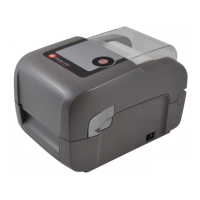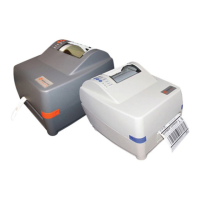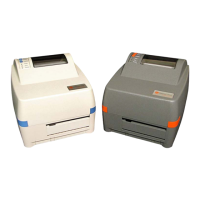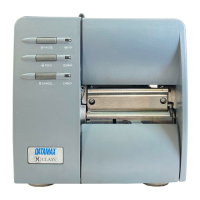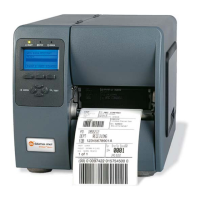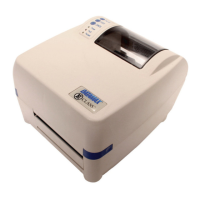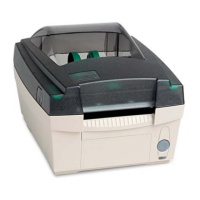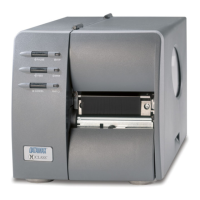Label Formatting Command Functions
140 Class Series 2 Programmer’s Manual
Embedding
Numeric strings for incrementing may also be embedded between alphabetic characters
(e.g., when systems require alphanumeric bar codes with alphabetic prefixes or
suffixes).
Sample:
<STX>L<CR>
161100000100010AB0001CD<CR>
+ 100<CR>
Q0003<CR>
E<CR>
The sample above will print three labels, incrementing 0001 by 1
on each label with AB and CD remaining untouched: AB0001CD,
AB0002CD, AB0003CD. Note that the increment value has one
leading blank and two trailing zeros, while the blank is a pad
character and the trailing zeroes are placeholders that leave CD
unchanged.
– (<)()) Make Last Field Entered Decrement
This command, useful in printing sequenced labels, causes the printer to automatically
decrement a field in a batch of labels. The numeric data in the field will decrement by
the value assigned after the minus (-) sign each time a label is produced [or the less
than character [<] can be substituted to make the field decrement alphabetically, or the
right parenthesis [)] can be substituted to make the field decrement hexadecimal data
(valid hexadecimal data is 0-9 or A-F, usually in pairs)]. This command is effective only
on the label format record that it follows, and is intended to be used with the Q, <STX>E
or <STX>G commands.
Syntax:
*pii
*
-
Is – for numeric decrement, < for alphanumeric
decrement, or) for hexadecimal decrement.
p
-
Is the fill character for the leftmost character of the
field.
Where:
ii
-
Is the amount by which to decrement the field.
Sample:
<STX>L<CR>
132200000000000123AB<CR>
<01<CR>
Q0003<CR>
E<CR>
The sample above will generate a single field label format that
prints the initial label with a value of 123AB, and then decrements
that number by one for the next two labels.

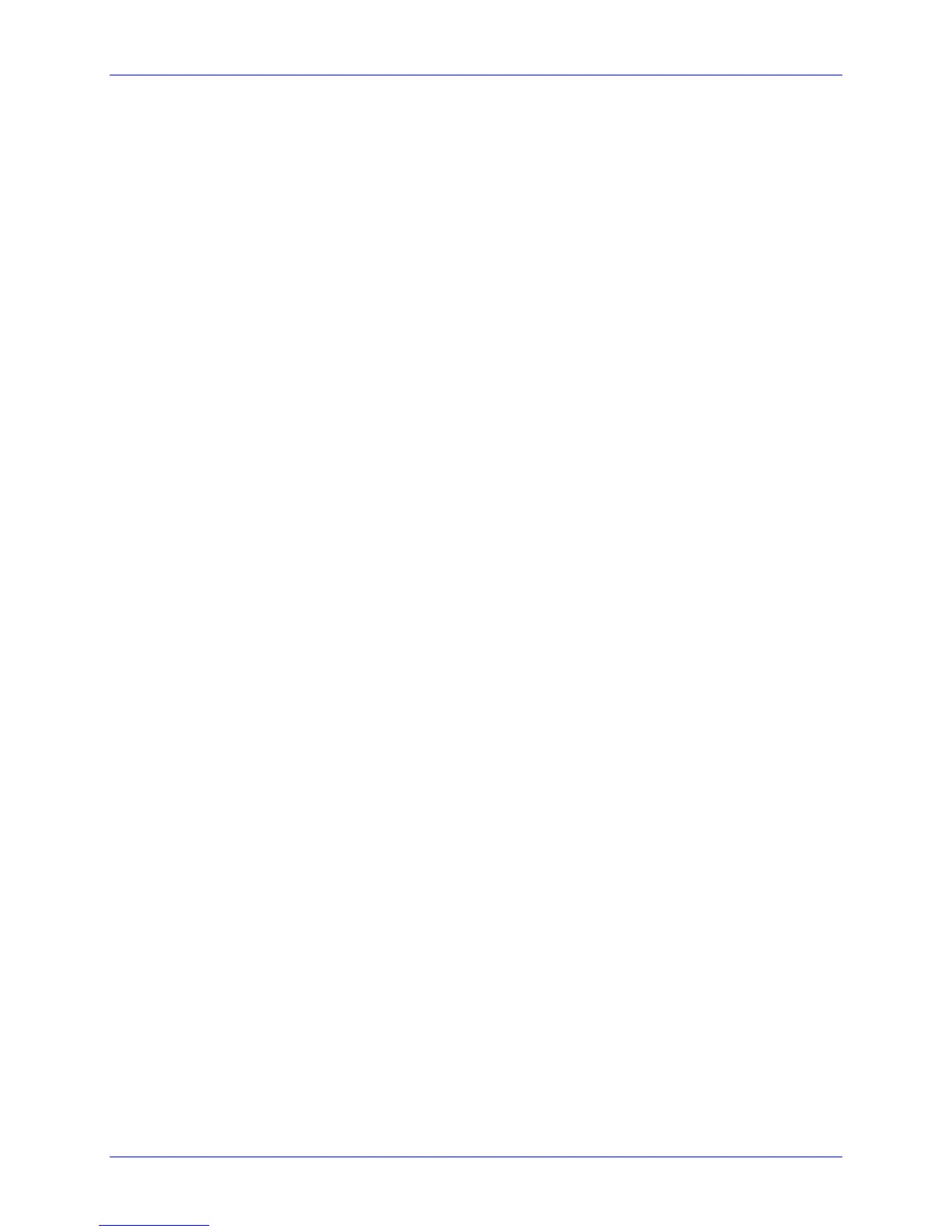